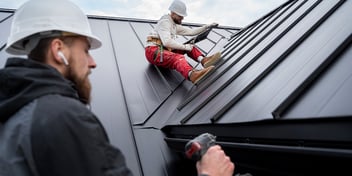- Home »
- Learningcenter »
- Metal roof maintenance everything
Metal Roof Maintenance: Everything You Need to Know
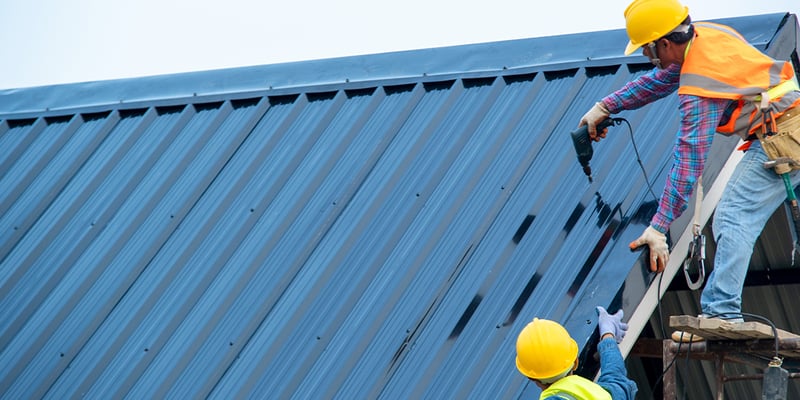
Investing in a metal roof is no small thing– they can cost double or triple the price of an asphalt shingle roof. At the same time, you can expect your metal roof to last much longer than a standard shingle roof. Though the up-front investment is greater with a metal roof, the return on investment, in the long run, can be more favorable with metal rather than asphalt shingle roofs.
One of the benefits of metal roofs, in addition to their durability, longevity, and energy efficiency, is how low-maintenance they are. The potential savings on maintenance and replacement costs over the lifespan of the system should be factored in when comparing the costs of different roofing system materials.
Just because metal roofs are low-maintenance, though, doesn’t mean there aren’t a few regular maintenance tasks you’ll want to take care of to ensure your roof stays in good working order and can protect your home for many decades to come.
Let’s take a closer look at common maintenance tasks that can help keep a metal roof in great shape as well as the differences between the maintenance required for standing seam metal and screw-down metal roofing.
Why Is Maintenance Important For a Metal Roof?
Roof maintenance might not sound like your idea of a good time, but there are a number of compelling reasons why this should be something that you make a part of your seasonal maintenance schedules.
Preventing Potential Problems
One of the major reasons that maintenance is so important for metal roofs is that it can help prevent problems from popping up down the road. Prevention is often the best cure, and performing regular maintenance tasks can mean that expensive problems don’t have the opportunity to emerge.
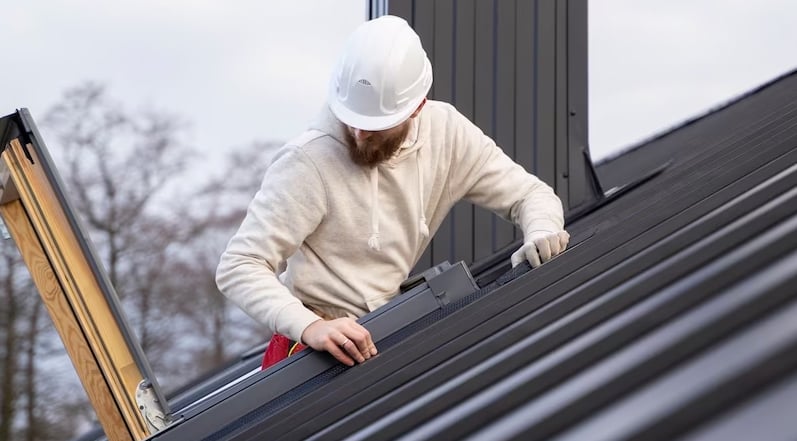
Beyond that, with roofing problems, it’s always better to catch and address issues sooner rather than later. Small leaks rarely remain small for long, and scratches in the paint system can lead to rust and an eventual leak.
Prolonging the Roof System’s Lifespan
Though metal roofs are a more expensive investment than other types of roofing systems– such as asphalt shingles– one reason the extra cost is justified is the longevity of metal roofs. Compared to traditional asphalt shingle roofs, which often have an estimated life expectancy of 12-20 years, metal roofs can last between 40 and 70 years.
Of course, a number of factors influence how long your metal roof will last, including the type of metal, the metal gauge, the climate, whether you choose standing seam or screw-down metal roofing, and more. One big factor that will impact the longevity of your metal roof, though, is how well you maintain it.
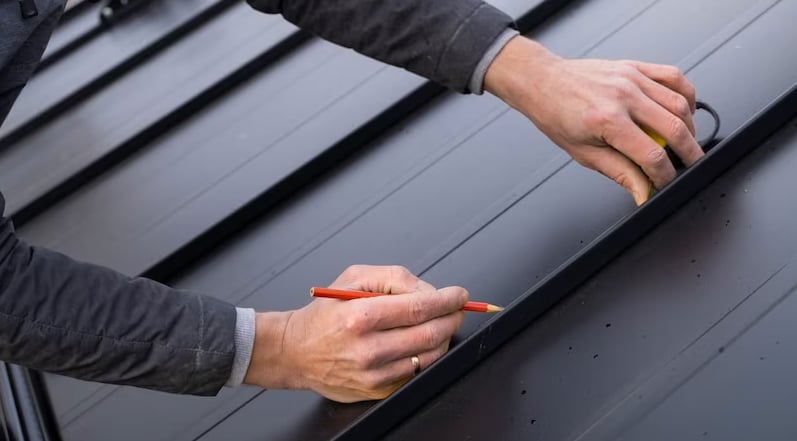
As with all products, the integrity of your metal roof and its accessories will be aided by a regular maintenance schedule. Not only does maintenance keep your roof in good working order, but it also ensures that eyes are regularly set on your roof to ensure that there aren’t any issues to address before they get larger and more expensive.
Maintaining the Aesthetic Appeal of Your Roof
Though performance and protection are the most important reasons to perform regular maintenance on your roof, it will also help your roof keep looking great for years to come.

Whether you’re thinking about selling your home down the road and you want to boost your curb appeal, or you simply take pride in having a well-cared-for, clean roofing system, regular maintenance is one of the easiest and best ways to ensure your roof remains aesthetically appealing and doesn’t become dingy, dirty, rusty, or otherwise unsightly.
Understanding the Different Maintenance Needs For Standing Seam and Screw-Down Metal Roofs
You can choose from two primary types of metal roofing systems that require different amounts and types of maintenance. Standing seam metal roofs involve panels being locked together in a series or mechanically seamed. Screw-down metal roofs, on the other hand, are metal panels that are fastened down with screws and washers that remain exposed to the elements.
Standing Seam Metal Roofs
Though all roofs require maintenance, you’ll be glad to know that standing seam metal roofs are just about as low-maintenance as a roof can be. After your standing seam roof is newly installed, very little maintenance is required except for regular inspections of penetration points such as vent pipes and skylights.
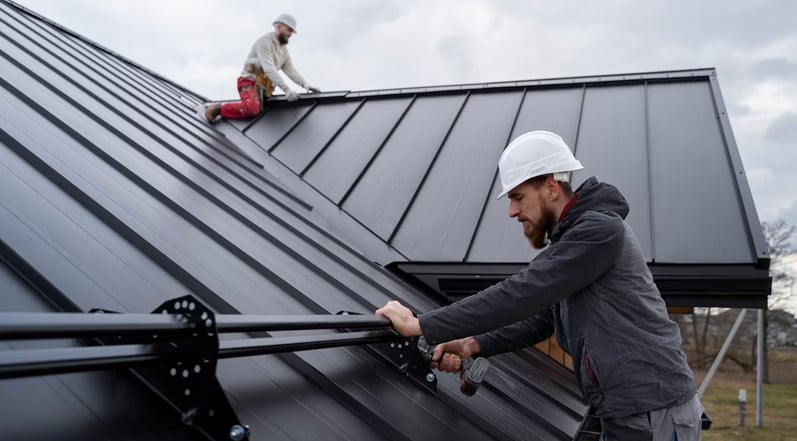
Beyond that, cleaning is the only general maintenance required for some time. Despite the low-maintenance nature of these roofs, it’s still a good idea to have an inspection every year or two to help clear sitting debris, catch potential issues, and help prolong the lifespan of your roof.
Screw Down Metal Roofs
Screw-down metal roofs aren’t as low-maintenance as standing seam roofs because the fasteners are exposed, and the metal panels aren’t able to naturally expand and contract in response to temperature fluctuations.
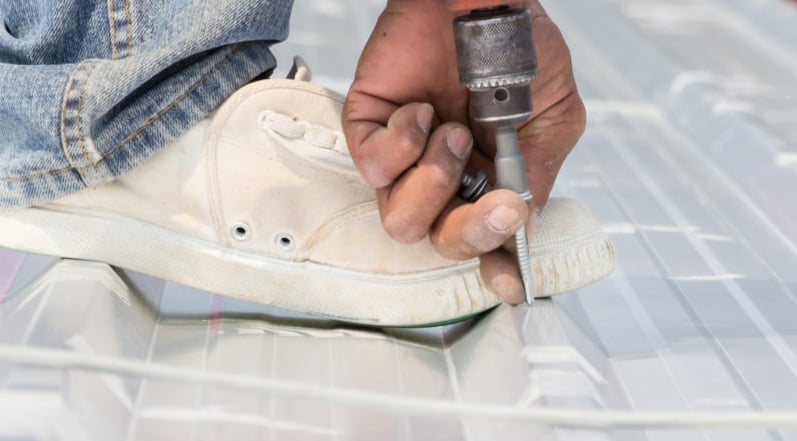
The pressure this causes over time means that screw-down metal roofs will require more maintenance than standing seam metal roofs. The screws will all need to be replaced every five to ten years. If you fail to have this work done, larger, more costly problems can emerge, and the metal roof can become quite vulnerable in strong storms with heavy winds.
What Does Metal Roof Maintenance Consist Of?
Metal roofs are low-maintenance, but that doesn’t mean you shouldn’t have it inspected by a professional roofing contractor or perform regular maintenance tasks to keep it in good working order and prolong the life of your roof. When well taken care of, a metal roof can last for decade after decade.
It’s worth noting that proper installation goes a long way when it comes to metal roofs. At the same time, you don’t want to neglect regular maintenance tasks and periodically inspect it to ensure there aren’t any problems to address.
Clearing Debris and Leaves
Having a bunch of leaves and debris on your new metal roof doesn’t just make your roof look messy; it can also lead to the paint system on the metal getting scratched or stained.
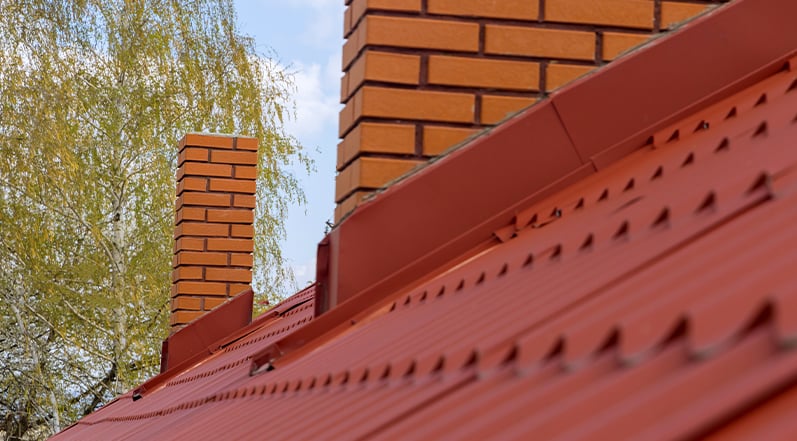
Leaves and branches can get stuck in areas with horizontal planes or low slopes and in valleys on your roof system.
Cleaning Off Dirt, Stains, Mildew, and Other Elements
You want to reduce the occurrence of dirt and other elements sticking to the surface of your roof. This won’t just help keep your roof looking nice, but it will also aid in extending its lifespan.
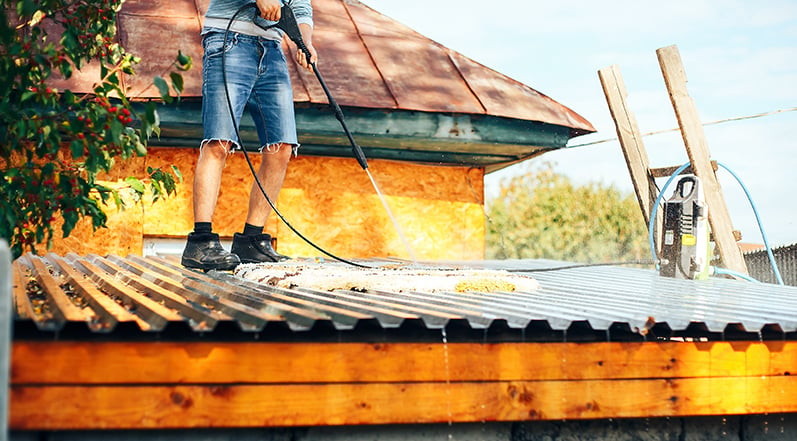
Though your first thought might be to use a high-pressure power washer on your metal roof, this is the last thing you want to do. Pressure washing can cause damage to the surface of your roof, so a garden house with light pressure is a better choice.
Keeping Gutters and Downspouts Clean
Your gutters and downspouts are the unsung heroes of your roofing system– they are responsible for moving water away from your roof, structure, and foundation.
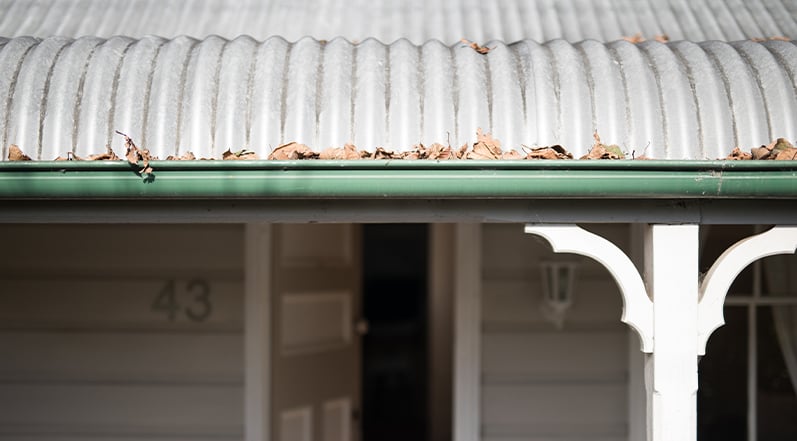
In order to ensure proper drainage, make sure that your gutters and downspouts are clean and free from debris. When gutters are clogged, water can back up and cause leaks and other damage.
Trim Overhanging Branches
The metal surface of your roof can be damaged by limbs or branches that fall. It’s important to trim any tree branches that hang over your roof. You’ll want to be particularly attentive to this if you know a big storm is on its way, as high winds will increase the risk of limbs and branches falling on your roof.
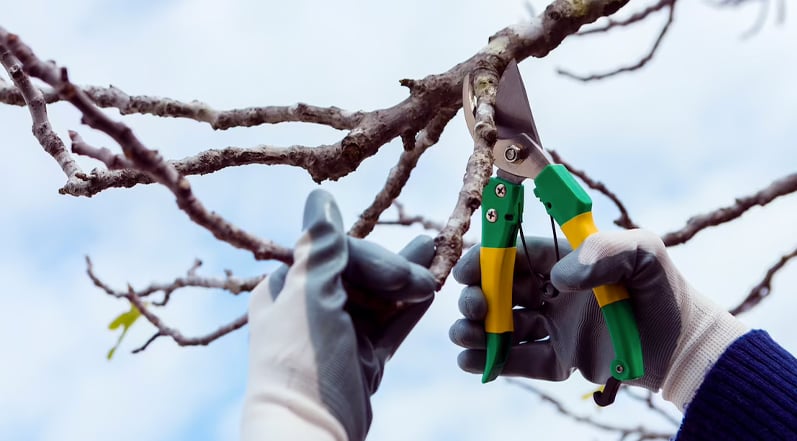
Even if you’re not worried about an overhanging branch actually falling on your roof, you still want to make sure no branches can touch or scrape the surface of your roof. The paint system can get scratched and scuffed up when branches rub against it.
Prevent Ice Dams
If you live in a colder climate, you’ll want to take some steps to make sure ice dams can’t form. Ice dams are a phenomenon that occurs when snow melts and starts to run off the roof but freezes again at the eaves. This can allow water to get up under your roof.
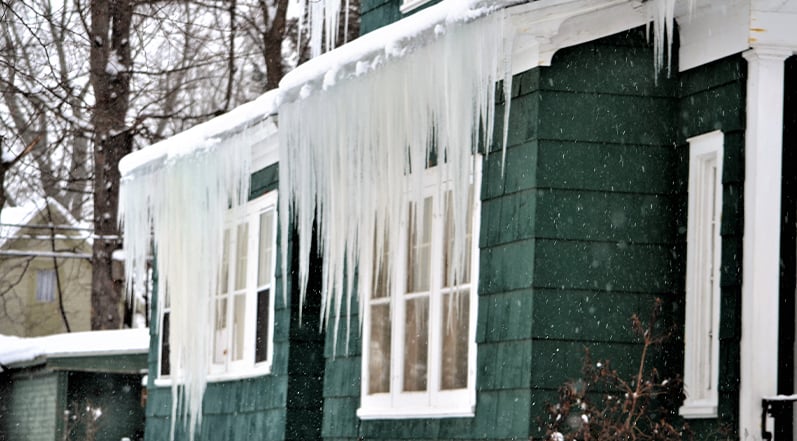
To help prevent ice dams, you’ll want to make sure you have proper ventilation, insulation, and attic sealing.
Regular Inspections
One of the best things you can do for your metal roofing system is to have it regularly inspected by a professional roofing contractor. They will be able to look at the roof’s current condition and point out problems that could emerge in the future.
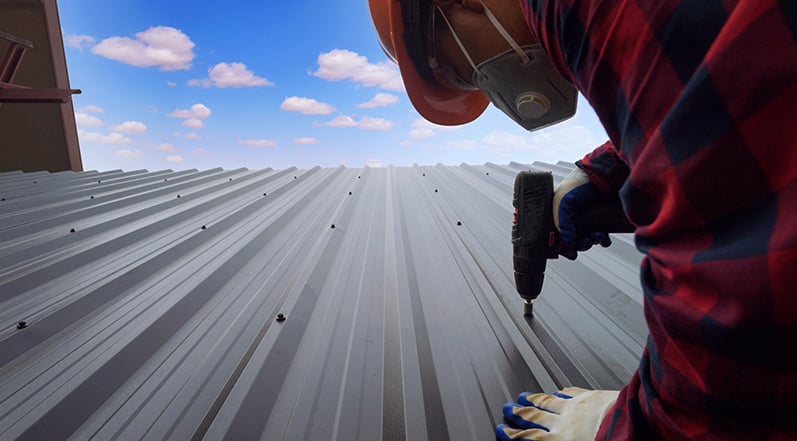
Though some of the following maintenance steps might be tasks you are comfortable doing on your own, a roofer can also check into all of them when they come out for an inspection.
Address Rust Spots
If you ever notice that there are spots on your metal roof that are rusting, it’s important to address them right away.
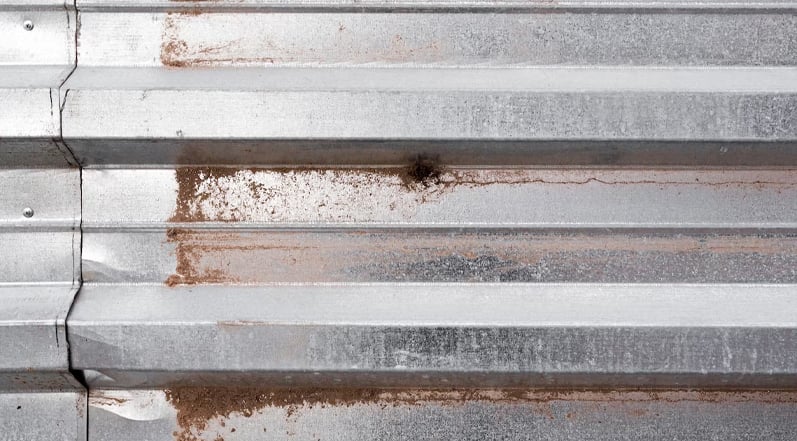
Rust can be removed with a wire brush, and then the area can be cleaned before applying a rust-inhibiting primer. You can then use a touch-up paint that is designed for metal roofs. Before taking this on as a DIY project, it’s a good idea to look at your warranty and ensure you aren’t partially or fully voiding it.
Check Flashing and Sealants
Though standing seam metal roofs are very low-maintenance, particularly when they’re new, it’s always important to keep an eye on the areas of your roof that are most vulnerable to water penetration. You’ll want to check the flashing around vents, chimneys, and other roof penetrations to ensure they are in good condition and securely fastened.
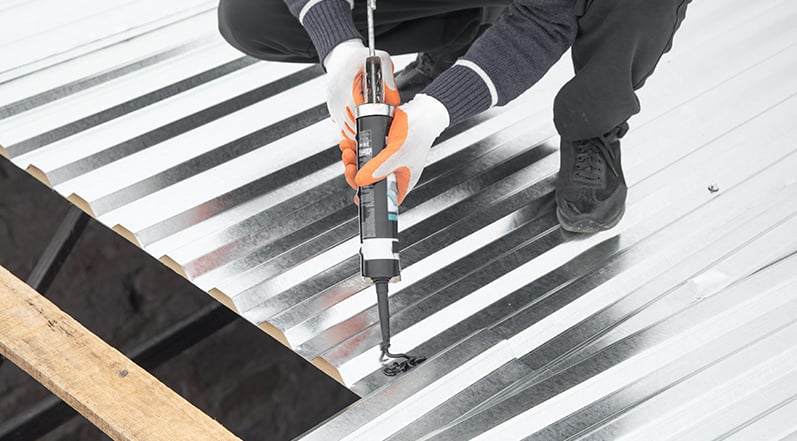
Any worn-out or damaged sealants should be replaced to make sure the seal is watertight.
Look For Scratches, Chipping, Scuffs, Fading, Flaking, or Chalking
Several things can create surface scratches on your metal roof, including a small branch falling or an installation error. Touch-up paint pens can often be used for minor scratches, but it’s important to follow the manufacturer’s recommendations to ensure you don’t void the roof warranty.
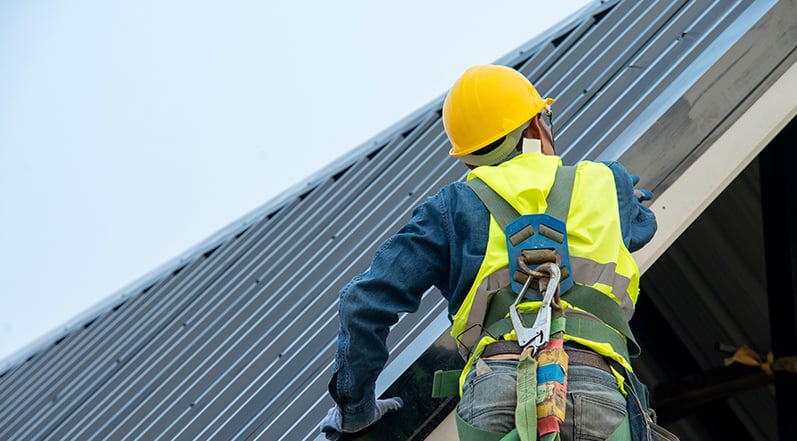
Beyond minor scratches, chips, or other issues, it’s best to have a pro examine the damage.
Checking the Fasteners
Though checking the fasteners that hold your roofing system down needs to happen more frequently with screw-down metal roofs, it’s also important for standing seam roofs. Keep an eye out for fasteners that are crooked, loose, angled, or missing.
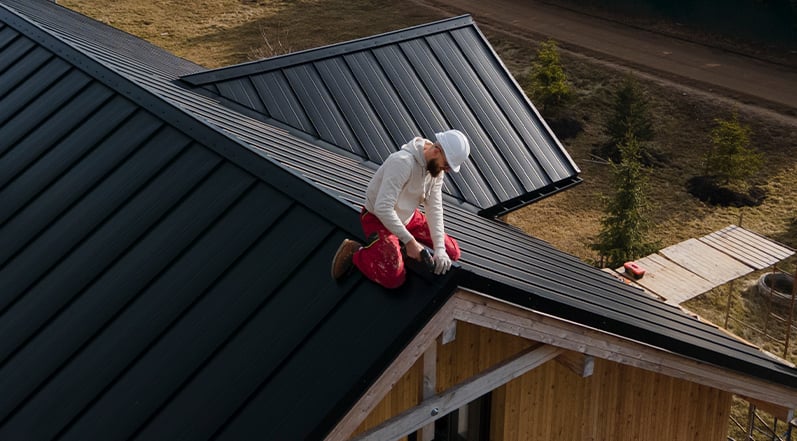
If your fasteners have an EPDM washer, it’s worth noting that this will begin to break down from UV exposure and potentially lead to a place where water can penetrate the system.
Checking Panel Seams
During an inspection, a roofing company will make sure that the panels haven’t dislodged, loosened, or shifted from their original position. The ideal is for all of the seams to be undamaged and tightly fit together.
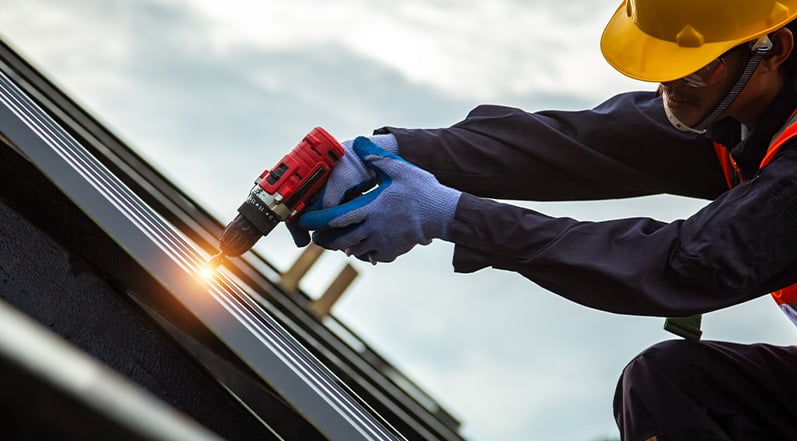
A professional roofer can also ensure enough room for the panels to expand and contract due to thermal fluctuations.
Looking For Punctures
Metal roofing is highly durable, but that doesn’t mean that it is immune to being punctured when debris falls on it.
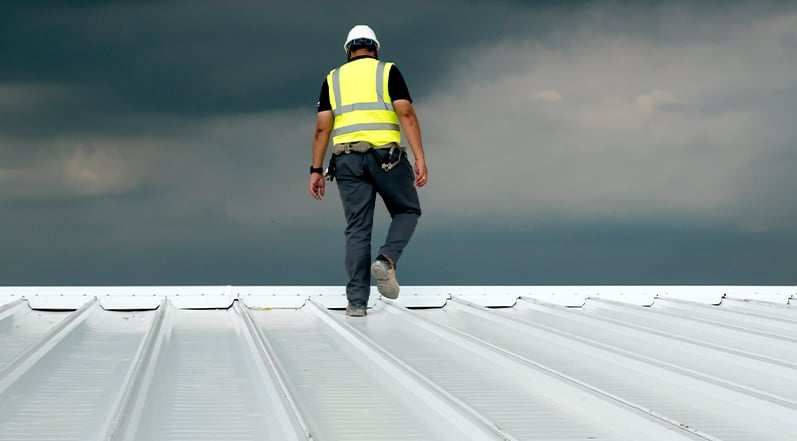
Keeping an eye out for holes or punctures is an important step of the inspection process, as even the smallest penetration can lead to big problems in the future.
Is It Time to Inspect Your Metal Roof?
Whether you had a metal roof installed two years ago or twenty years ago, it’s important to make sure you have regular inspections to ensure that there are no issues that should be addressed before they grow into more extensive, more expensive repairs. Having your roof inspected can also give you something that is practically priceless– peace of mind. When you have a reputable and knowledgeable roofing contractor inspect your roof, you can feel confident that they will be able to inform you of any problems and give you a sense of the tasks you’ll want to take care of to lengthen the life of your system.
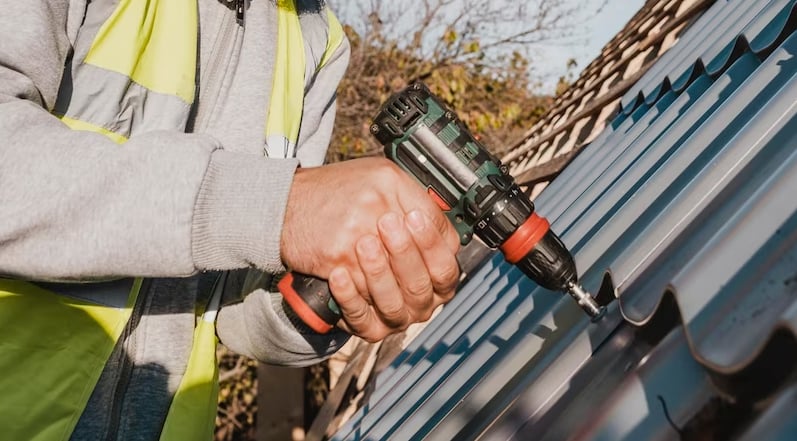
If you’re in the Atlanta area and you’re looking to have your metal roof inspected, you’ve come to the right place! Colony Roofers is here to take care of any roofing needs you might have, whether your metal roof needs a repair or some regular maintenance done.
To schedule a free thirty-minute estimate and inspection, contact us today!
 Call (678) 365-3138
Call (678) 365-3138

